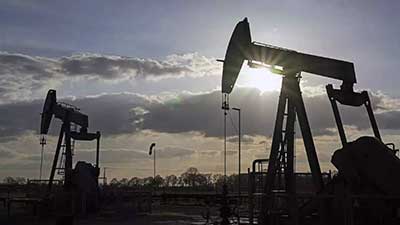Date: 01/05/2023
Relevance: GS-2: Effect of Policies and Politics of Developed and Developing Countries on India’s Interests.
Key Phrases: Price cap on Russian crude oil, Group of Seven Nations(G7), free on board basis, Cost, Insurance, and Freight, Refining Constraints, Diversification of Crude Purchase, Refinery Economics, Balancing Cost and Climate Objectives.
Why in News?
- India has been buying Russian oil at or above the price cap imposed by G-7.
- While commercially India is doing the right thing, the current situation may not be sustainable from an energy security point of view.
Price cap on Russian crude oil:
- A price cap on Russian crude oil is a limit set on the maximum price at which Russia can sell its crude oil to global markets.
- The Western countries comprising the Group of Seven Nations(G7), the European Union, and Australia implemented this price cap to punish Russia for its invasion of Ukraine and limit the profits Russia makes from its oil exports.
- The cap is set at $60 per barrel of seaborne Russian Urals crude oil.
- Freighters carrying Russian oil will not be able to access necessary services such as ship insurance and vessel clearances if they attempt to sell oil above the price cap.
Russia's Crude Oil and India:
- India's Finance Minister has said India may buy Russian crude oil at or above the G-7 price cap if OPEC+ output cuts cause energy costs to rise.
- India has purchased some crude oils from Russia above the price cap, and while some payments were delayed, refiners are finding ways to pay for them.
- India is also looking for discounts on crude from other countries based on the oil grade.
- The cap price is applicable on FOB (free on board) basis — the liability and ownership of the goods have been transferred from a seller to a buyer, whereas Russian crude is being delivered at Indian ports by the sellers on CIF Cost, Insurance, and Freight – basis (the fees a seller pays to cover the costs).
Challenges:
- Payment Challenges:
- Some Indian banks have stopped clearing payments for Russian oil above the $60/barrel cap.
- This decision was taken in the interest of maintaining geopolitical balance. However, this may have a negative impact on the supply of crude oil from Russia to India.
- Refining Constraints:
- Currently, Russian crude accounts for about 35% of Indian imports. However, the maximum potential of Russian crude imports in India is 40-45%, as set by refining constraints.
- Indian refiners are facing issues concerning the mercaptans (R-SH) in the jet/kerosene cut while processing the Urals in neat form.
- Kero-Merox units are facing issues in handling kerosene cuts of neatly processed Urals, and that stream needs to be bypassed to hydrotreaters.
- These challenges make it difficult for Indian refiners to process Russian crude oil cost-effectively and efficiently.
- To address this, refineries will need to process Urals in blended form with other crude grades, eventually constraining the upside of Russian crude inflows into India.
India's Options:
- Diversification of Crude Purchase:
- Indian refiners will try to diversify from the Americas (US, Canada, Brazil, Argentina), and West African countries (Nigeria, Angola, Gabon, Ghana, Congo) and balance it with the lion's share from Middle Eastern and Russian crudes.
- India's ability to negotiate favourable pricing and contract terms will come to play if it does not want to be too reliant on a single supplier.
- Refinery Economics:
- In the end, India’s crude purchase decision boils down to how refinery economics works for crude purchase.
- Indian refiners will choose crude based on the type of refinery they operate and the demand for various products they produce.
- They will also consider the price of crude oil and the refining cost, which includes transportation and operational expenses.
- Refiners will choose the most economical crude oil that produces the maximum yield of high-value products.
- A focused approach to upgrading public sector refineries is the need of the hour.
- Balancing Cost and Climate Objectives:
- The rising cost of energy imports presents a challenge for India in meeting its climate objectives. To reduce costs, India may have to make compromises in its climate goals.
- However, policymakers must strike a balance between reducing costs and maintaining their commitment to reducing emissions.
- It's essential to find a middle ground that supports both economic and environmental goals.
OPEC+ and China Factor:
- OPEC+ members are happy with current prices, and the average for the year would be way higher than in years before 2021.
- However, OPEC+ might struggle to prevent oil prices from declining, especially if China uses its strategic petroleum reserves to prevent oil prices from rising.
- A new dynamic is emerging in a way that which have never been seen before: OPEC members buying Russian petroleum products to use in their domestic markets while cutting production.
- The coming summer could be different from any in the past, as the impact of the power burn on oil market balances is way lower.
Conclusion
- India has a wide range of options for crude purchase, but the ultimate decision will come down to refinery economics.
- Diversifying crude oil sources can help mitigate the risks associated with an overreliance on any one region.
- Policymakers must also balance the economic benefits of reducing costs with the country's climate objectives.
- A careful consideration of these factors will help India chart a course toward energy security and sustainability.
Source: The Hindu BL
Mains Question:
Q. Analyse the challenges that India may face in sourcing Russian oil, and suggest the possible options that India could adopt to overcome these challenges.







